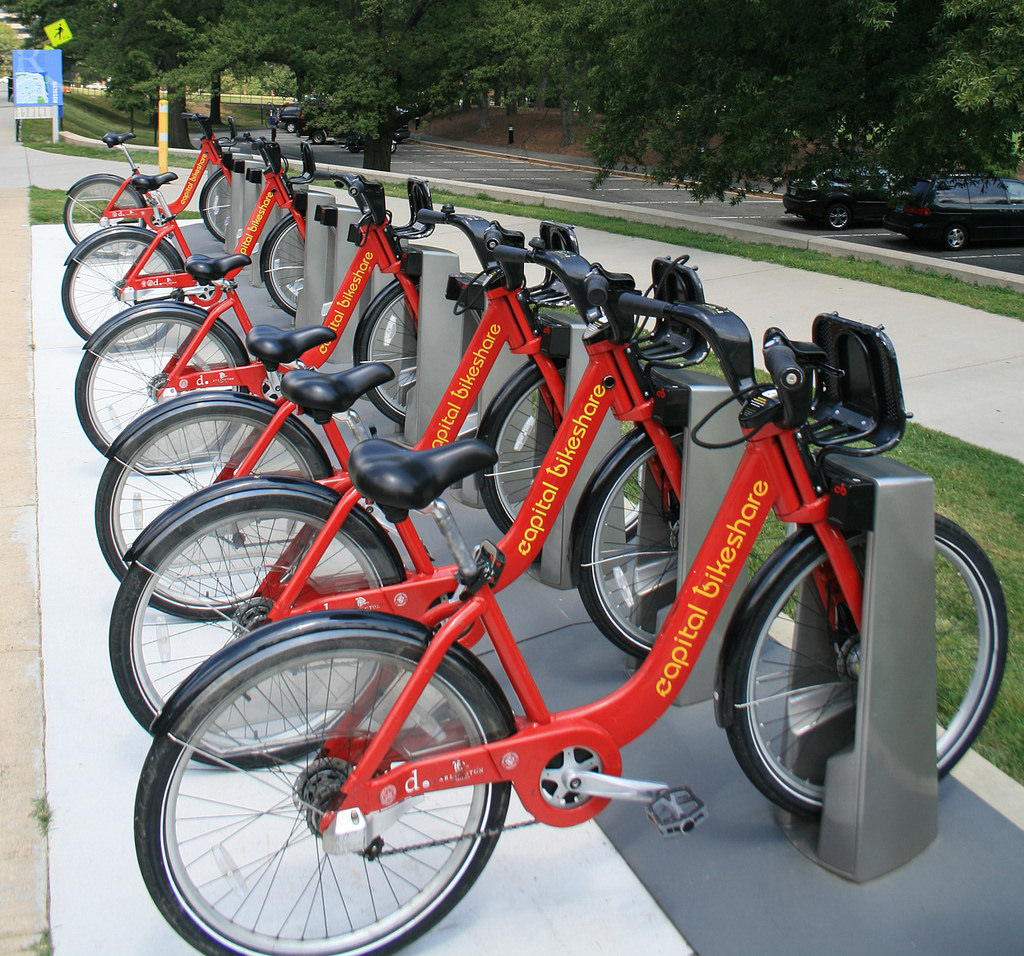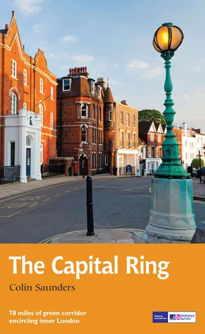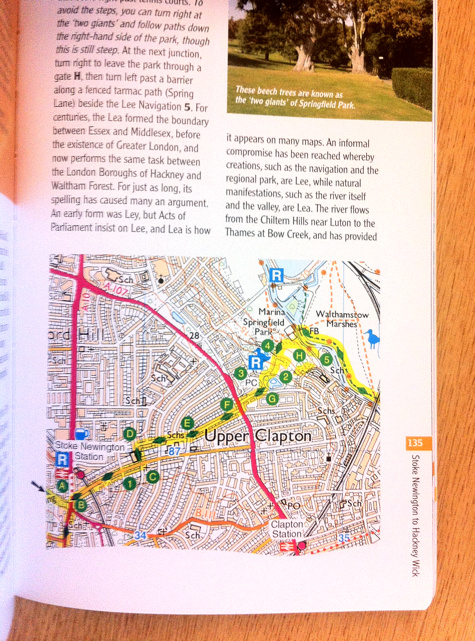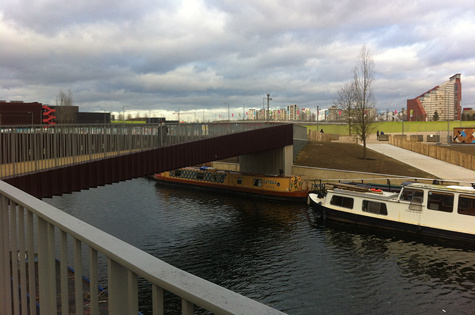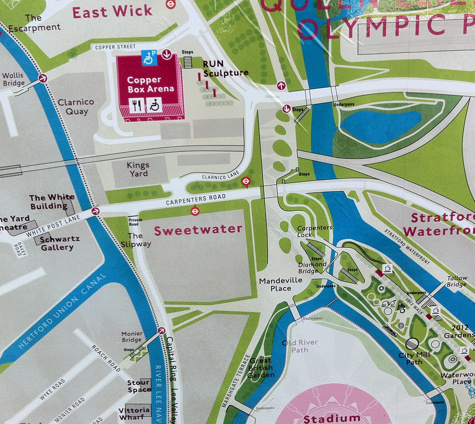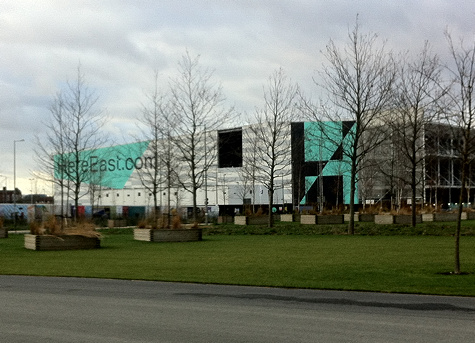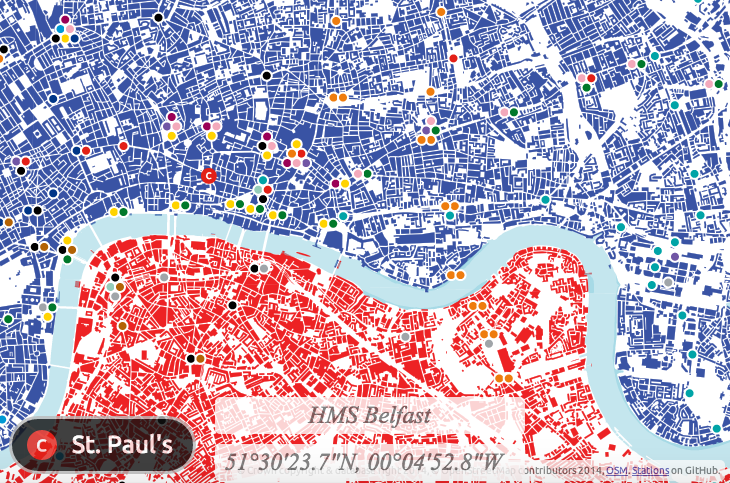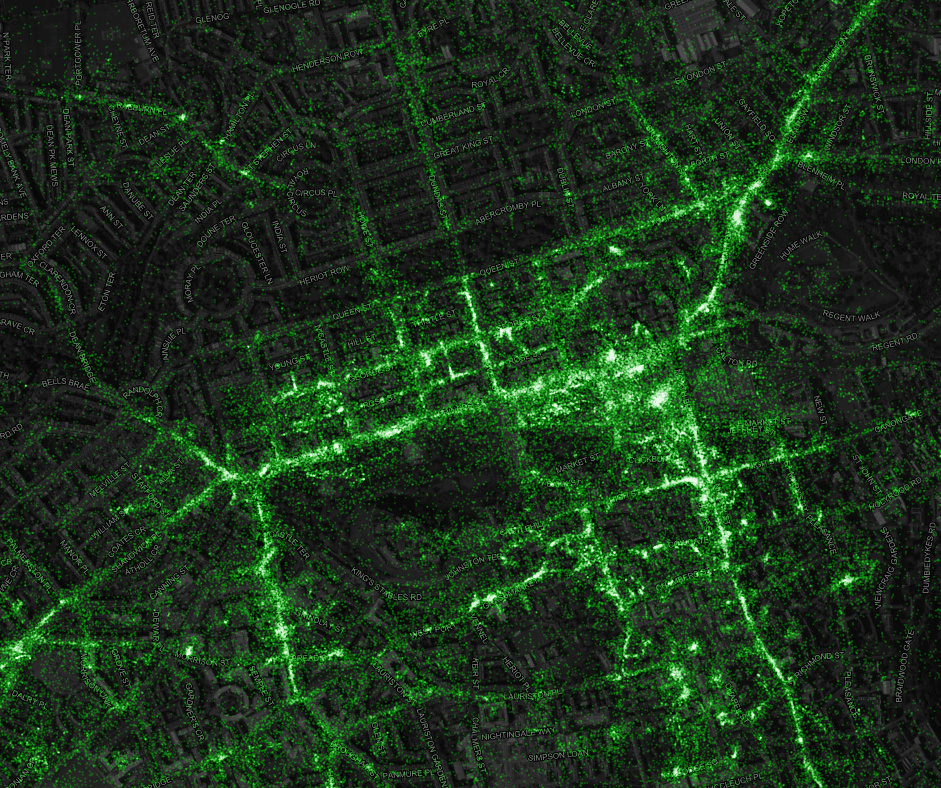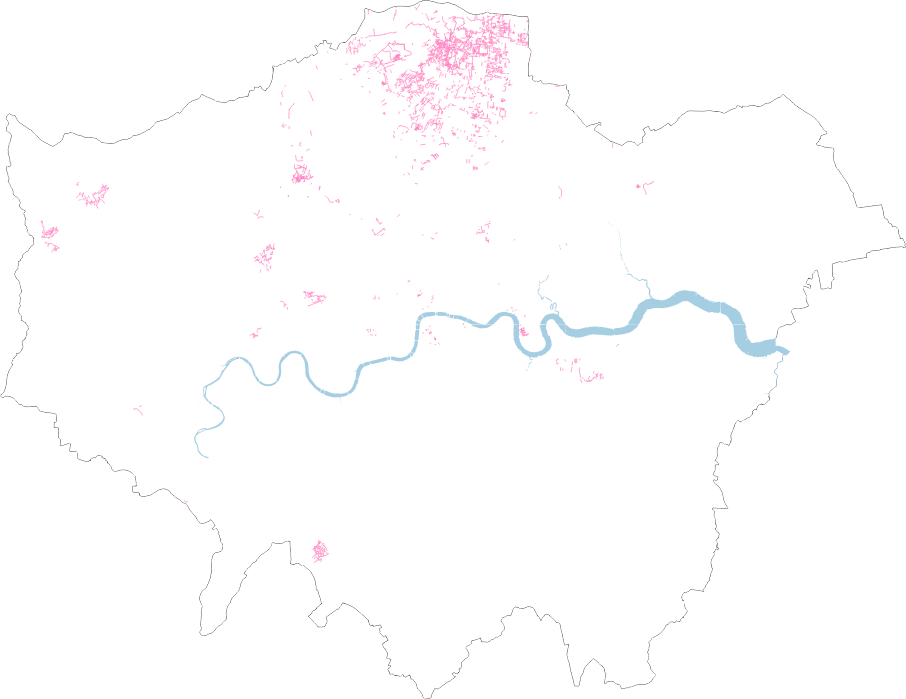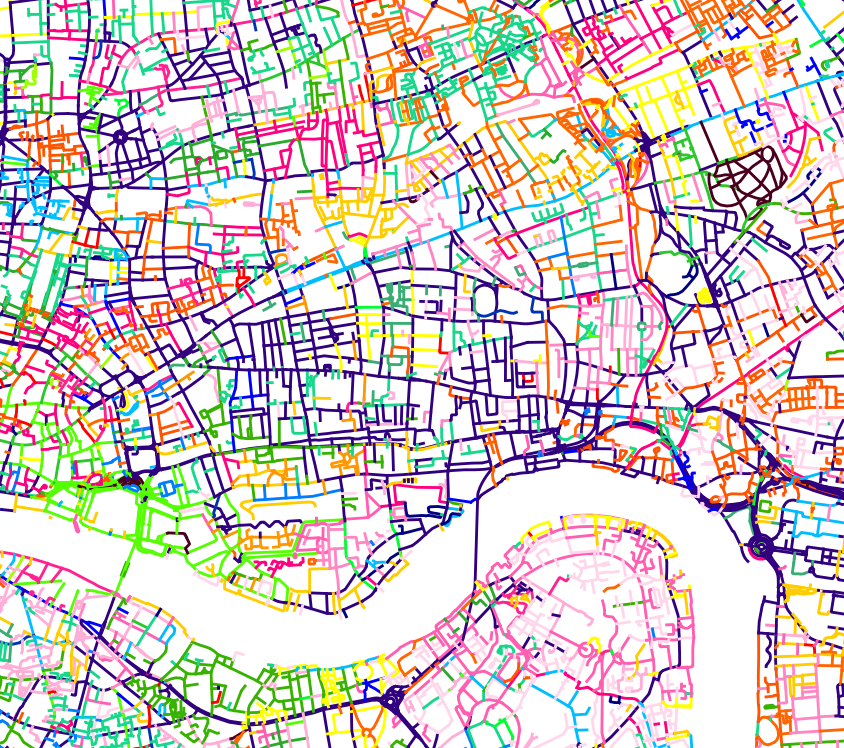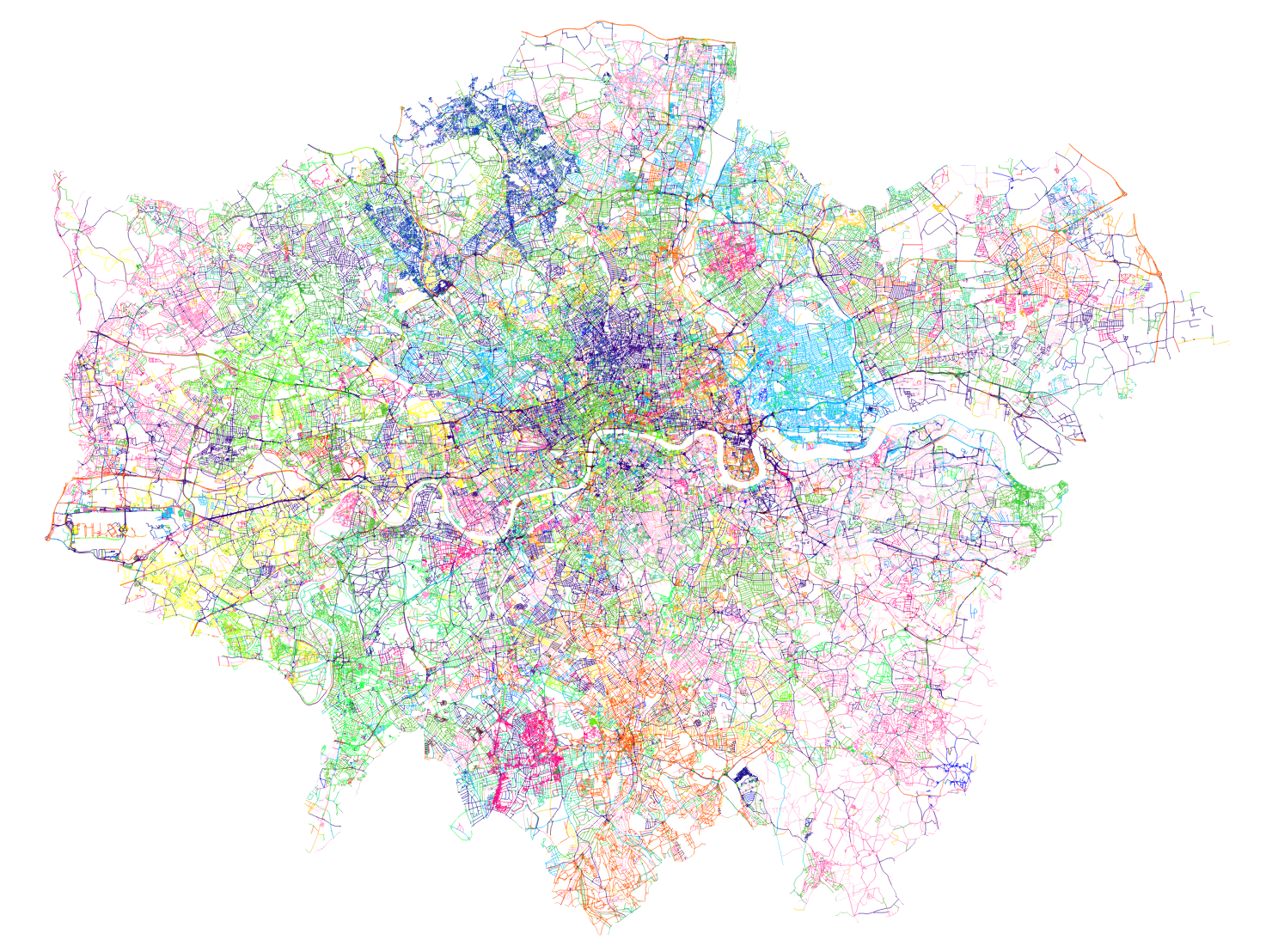Crossrail organised a number of tours of their major worksites, as apart of Open Doors, this weekend, for civil engineering students and other interested parties. One of the sites was the Dean Street box, which will form the western ticket hall at the Tottenham Court Road Crossrail station. While the eastern ticket hall will connect directly with the existing Underground station (for the Central and Northern lines), the western ticket hall is quite some distance away, and in fact is nearly half way towards Oxford Circus – it will also connect to the other lines, via new pedestrian tunnels, but it will be a long walk! The Dean Street box is a huge site itself, with six distinct levels, and yet only a small part of what Tottenham Court Road station will become in 2018:

The challenges of the site itself are illustrated just by getting to it – access is via the pavement on Oxford Street. As soon as the pavement barrier is drawn across and the doors open, the narrow pavement quickly crowds up with pedestrians, while numerous buses and angry, revving taxis, continue to squeeze along the street.
The Crossrail platforms will stretch between the two ticket halls, and space has been made for a future extension. Crossrail 2, should it be built, will have platforms here, in further tunnels crossing below these new platform tunnels, perpendicularly and approximately half-way between the ticket halls. Some of the pedestrian passageway tunnels, which also run between the two ticket halls, have sections which will connect with the equivalent for Crossrail 2, the extent of which appears in outline on the main site diagram. Planning ahead.
The first thing that strikes you when in the “box” is the huge number of old boiler pipes that are being used to brace the outer wall and stop the pressure of the London clay behind (which has been compressed from buildings over hundreds of years) from collapsing it. The boiler pipes near the top are smaller as they have less pressure to withstand. Some of the larger ones are starting to be removed now as the lower levels of the station ticket hall start to be structurally complete. The pressures are so huge that the engineering team is wary of suddenly removing one and causing any unwanted movement – so they are cutting notches in them to allow the pipes to continue to hold a weaker load, before removing them once the force has been almost entirely redistributed elsewhere.

Here, reached by a very large number of steps down a couple of gantries, you can see the western end of the eastbound Crossrail platform tunnel. I initially thought that the line of yellow struts was showing the platform itself starting to be built, but actually I think it is marking the “floor” upon which the rails will be laid, as it lies right in the middle of the tunnel, and so the platform level would be marked approximately by the line of lights to the right:

I was surprised to see the quite noticeable curve of the platform tunnel, to the right – I assumed they’d all be straight, which would enable easy boarding for those on wheelchairs and future platform-edge doors. Perhaps, should the latter happen, there will be some kind of mechanical gap infilling?
Looking in the other direction is the running tunnel, large by tube standards but much smaller than the platform tunnel, where trains will pass along from Bond Street station to here. Because the Dean Street box was excavated before the tunnel boring machine passed through, a tube of foam concrete was added back in, to give the tunnel boring machine something to push against as it passed through. The machine continued to line its tunnel in the box and the platform area, with concrete slabs like you can see below here, but with lower quality, weaker “sacrificial” slabs as they were then bulldozed shortly again after the machine had passed through:

It was somewhat eerie peering into the silent tunnel, with not a workman in sight, deep below the bustling streets of central London. Largely empty at the moment, with a couple of grooves in the base slab showing where the construction mini-railway had its tracks. Come December 2018, there will be up to one train every two minutes passing along here, so it will not be nearly as silent. Looking into this tunnel there is a noticeable gradient downwards. As trains travel upwards towards here, into the station, the slope will help slow them down, saving energy on braking.
Various parts of the worksite are being built to different specifications – much of the concrete structure will be clad and so not visible to the public, but there are some parts where concrete pillars will be visible features. So, some experimentation is currently taking place to test the quality of finish they can produce with the processes on site. Here is a test pillar that they are quite happy with already, but they think they can do an even better job when they put them in the appropriate place:

The edge of the western ticket hall box is immediately behind the pillar – notice the much coarser surface, as this will be covered with additional walls and claddings, so it will never be seen by the public. There is also quite a distinct colour/texture change line, running horiztonally along and reflecting different soil/clay conditions behind it.
Thanks to Crossrail and the contractors (Laing O’Rourke) for organising the tours and to the staff on site for showing us their site and enthusing on their work. At TCR, they assembled a PPE-free route through the site, allowing us (mainly civil engineerings students, only a few of the “general public”) to get right into the construction area and get an excellent feel of what is going on and the challenges of such a place. It is extremely tidy for such a complex construction site – with multiple levels having simultaneous construction, they have no choice but to keep everything super-organised. Various walkways have yellow lines and blue “walkway” silhouettes on the ground – somewhat reminiscent of the lines you have to walk along between the bottom of steps from an aircraft and the terminal building. Everything about Crossrail is on a grander scale than London’s existing transport infrastructure, and it will be most impressive seeing the completed stations, which are set to become major London destinations.
The old and the new:

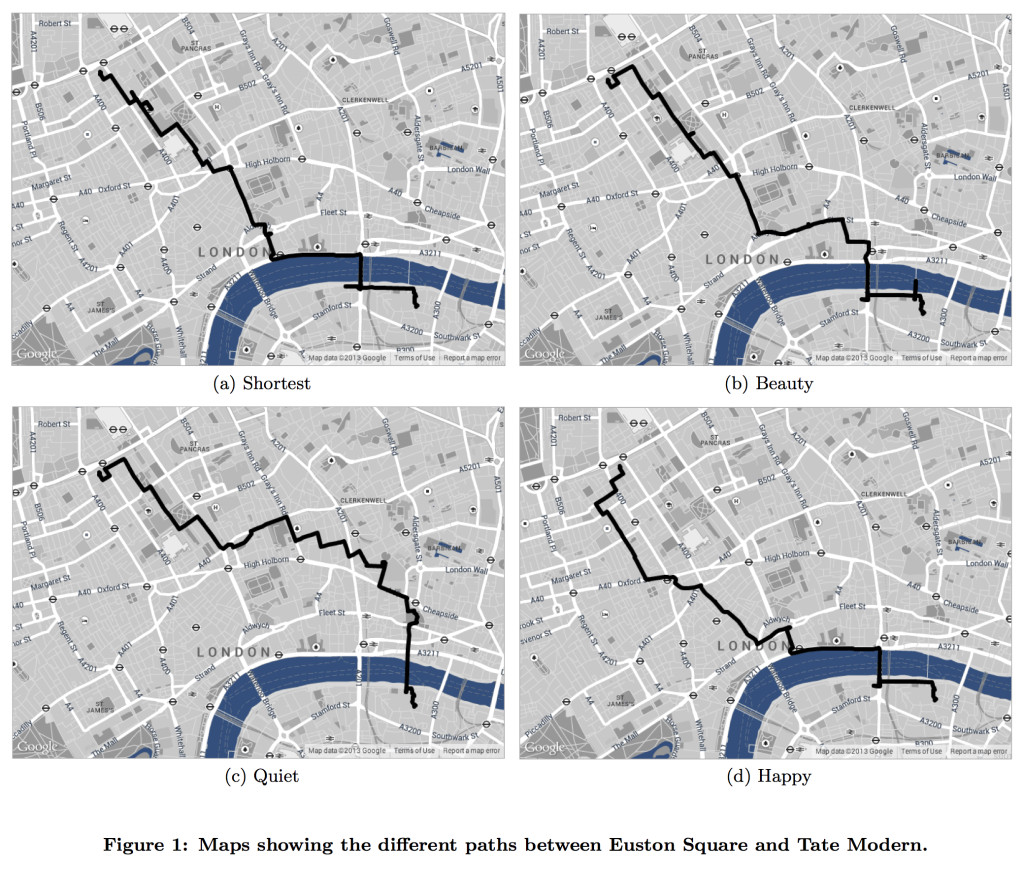







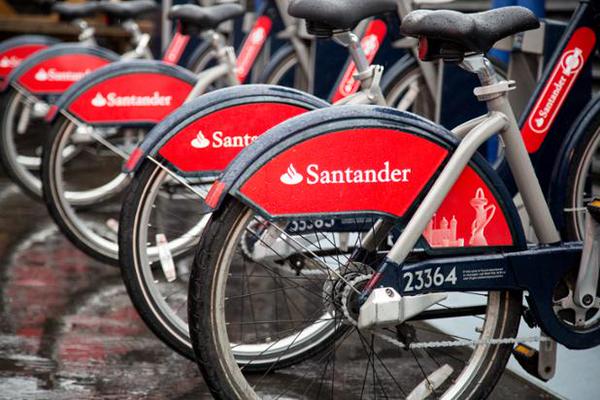
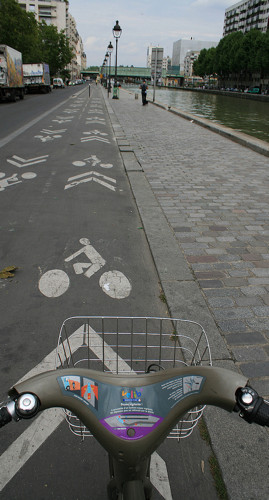 It’s great that London’s system can attract “big” sponsors – £7m a year with the new deal – but
It’s great that London’s system can attract “big” sponsors – £7m a year with the new deal – but  Have “
Have “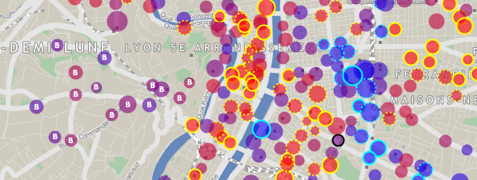 Remove the density rule (one docking station every ~300 metres) except in Zone 1. Having high density in the centre and low density in the suburbs works well for many systems – e.g.
Remove the density rule (one docking station every ~300 metres) except in Zone 1. Having high density in the centre and low density in the suburbs works well for many systems – e.g. 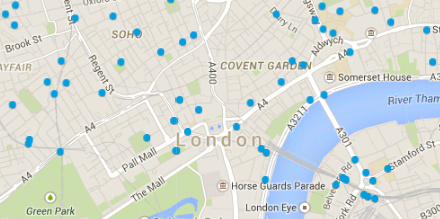 A better online map
A better online map 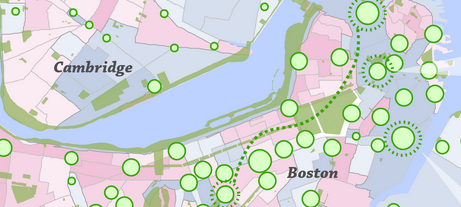 Encourage innovative use of the bikeshare data, via online competitions – e.g. Boston’s
Encourage innovative use of the bikeshare data, via online competitions – e.g. Boston’s 